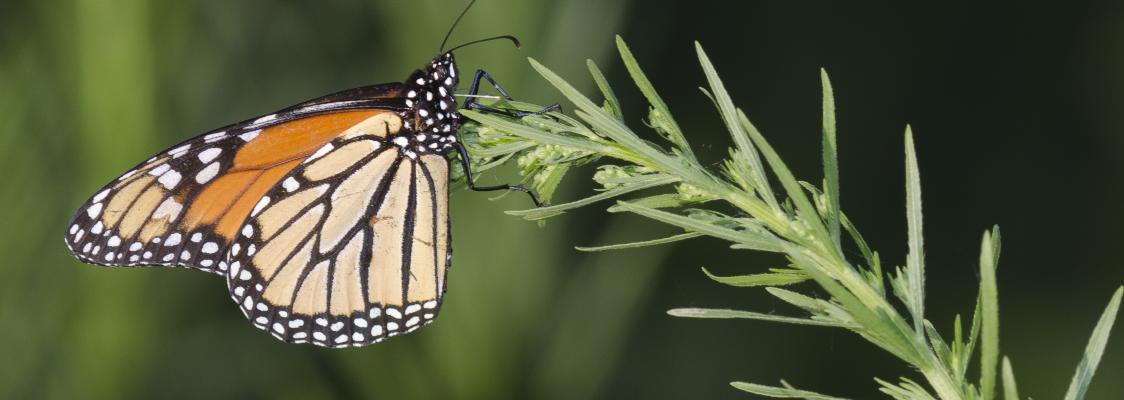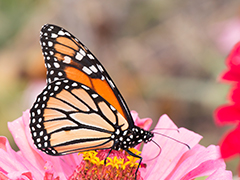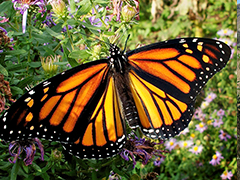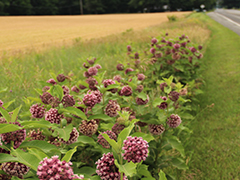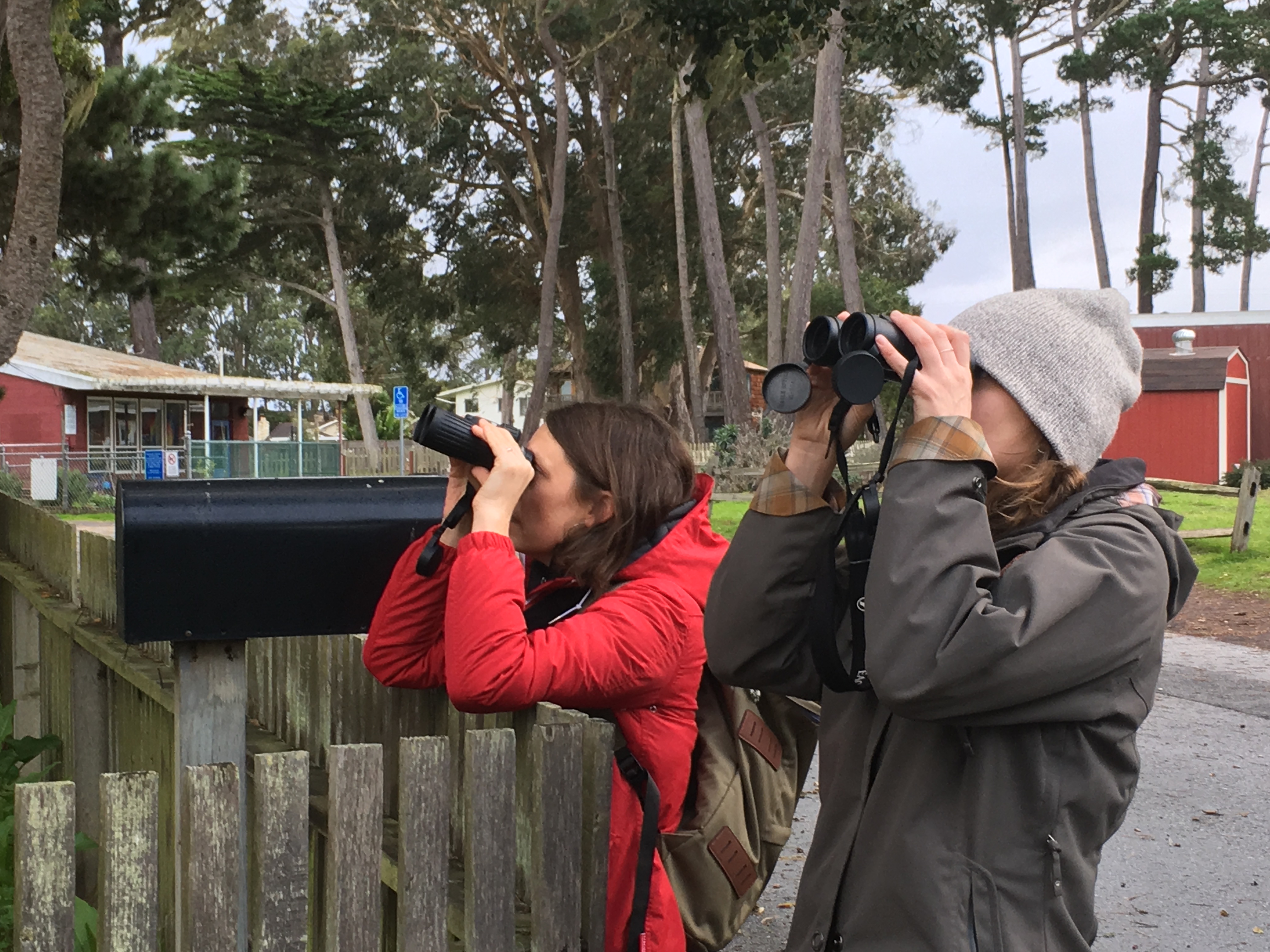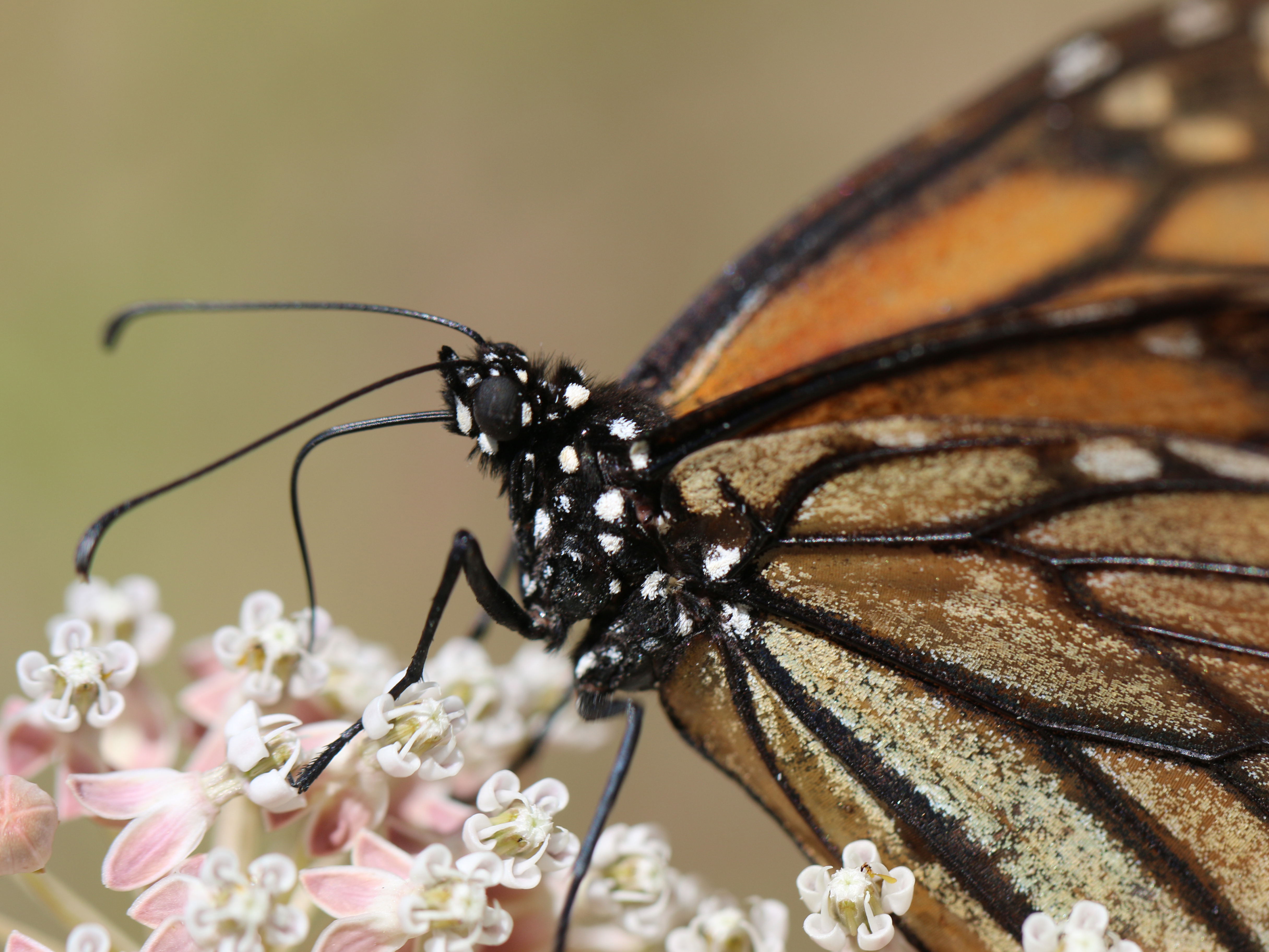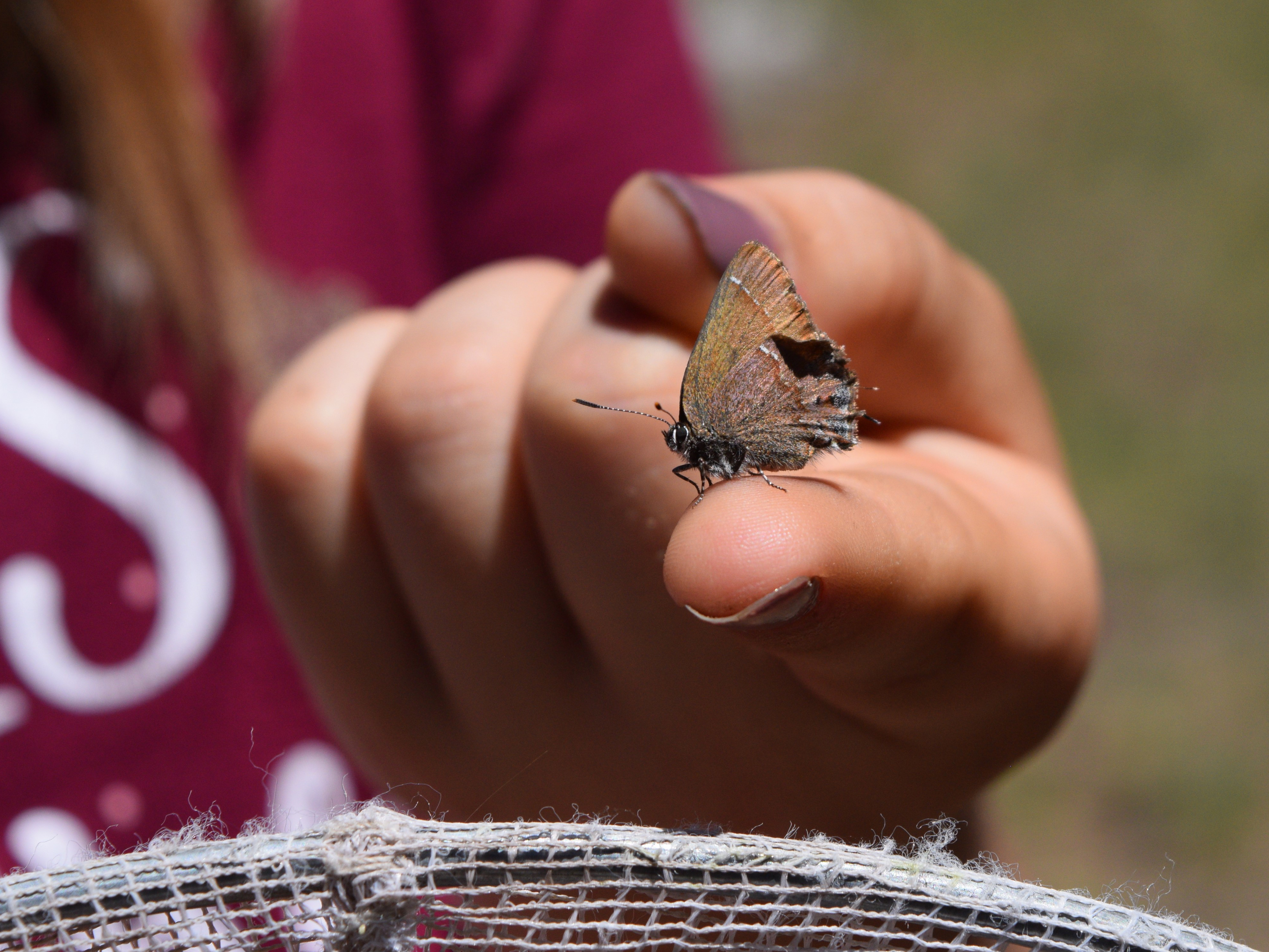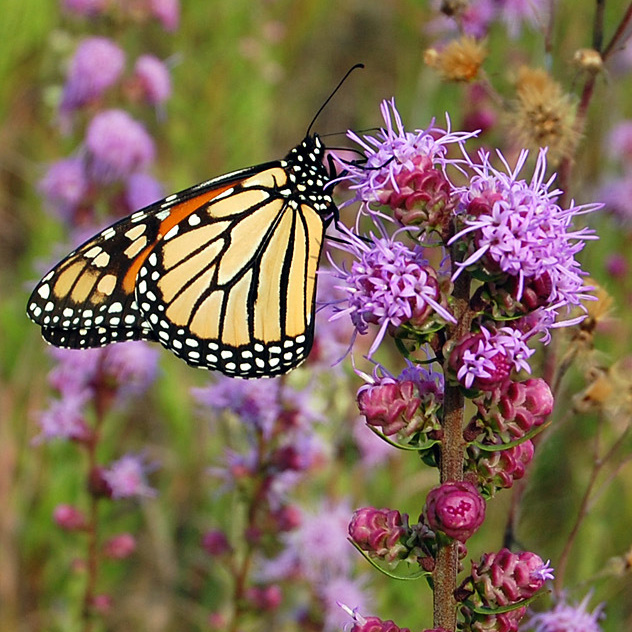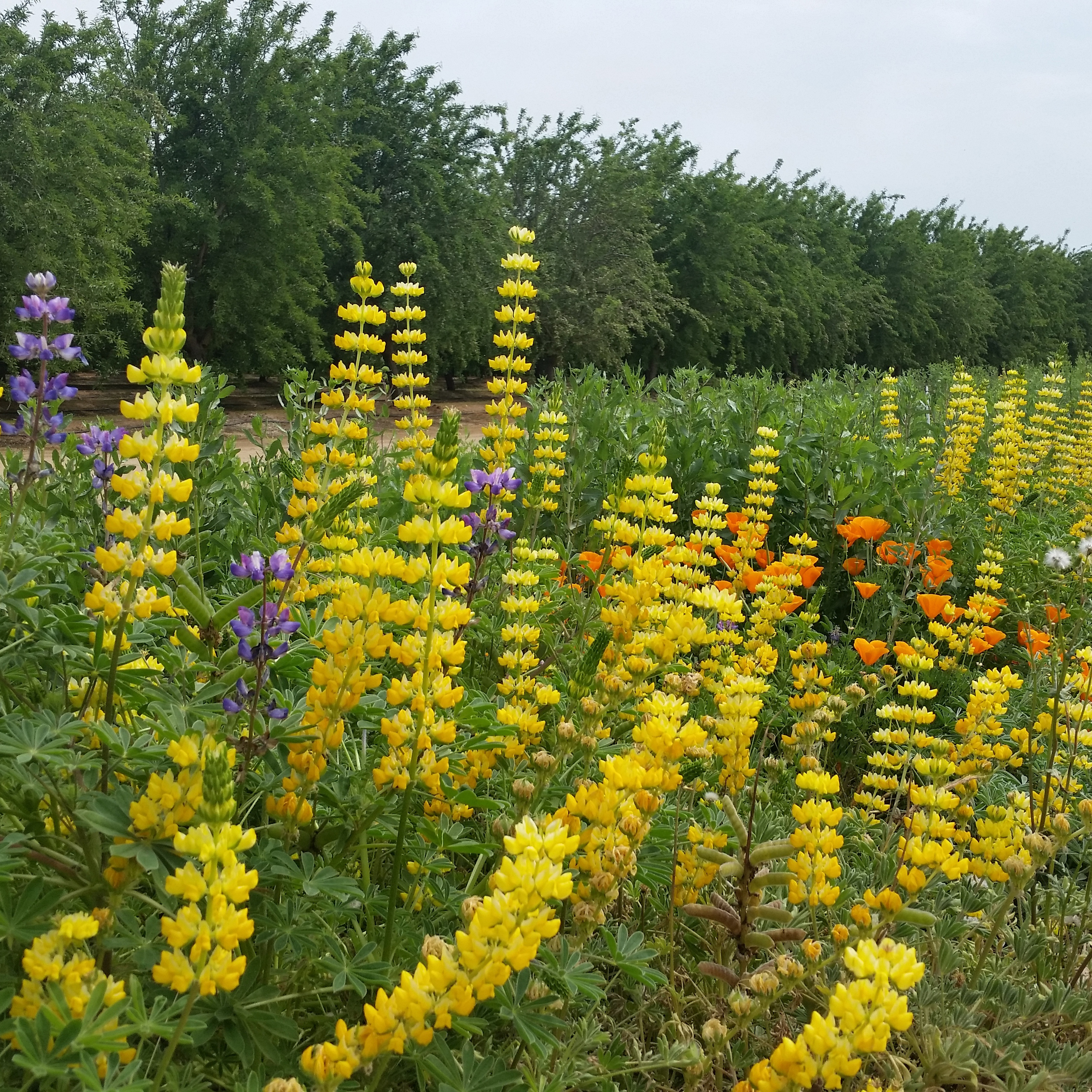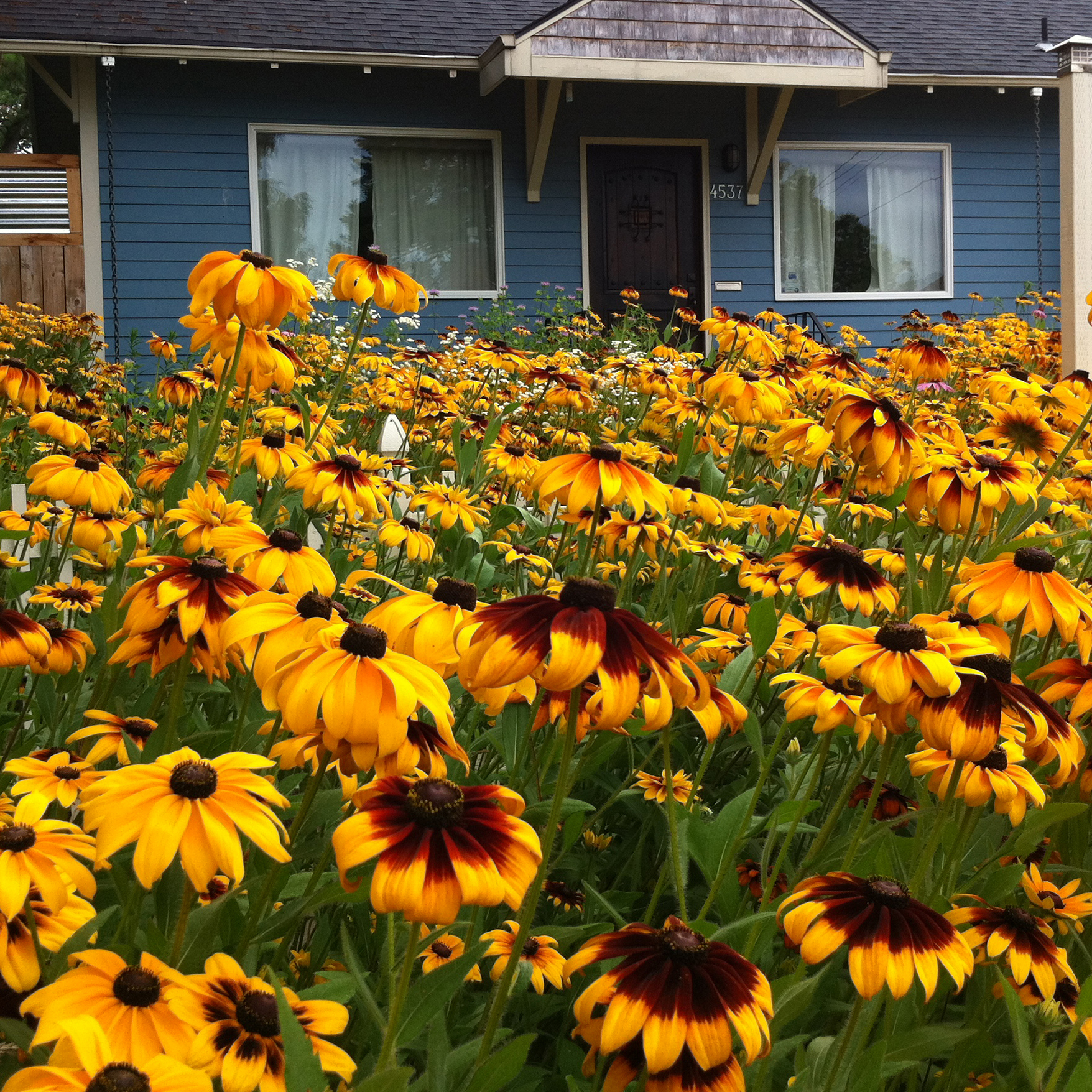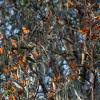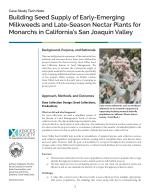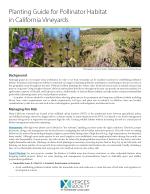Monarch butterflies (Danaus plexippus) are perhaps the most well-known and beloved butterflies in North America. A ubiquitous sight in gardens, prairies, and natural areas from coast to coast, their arrival in northern states and Canadian provinces is viewed by many as a welcome sign of the change in seasons from spring to summer. Renowned for their long-distance seasonal migration and spectacular winter gatherings in Mexico and California, the monarch butterfly population has recently declined to dangerously low levels.
In the 1990s, hundreds of millions of monarchs made the epic flight each fall from the northern plains of the U.S. and Canada to sites in the oyamel fir forests in central Mexico, and more than a million monarchs overwintered in forested groves on the California coast. Now, researchers and community scientists estimate that only a fraction of the population remains—a decline of approximately 70% has been seen in central Mexico and a decline of >90% has been seen in California.
The Xerces Society, government agencies, partner organizations, and communities are working across the U.S. to protect and restore habitat for monarch butterflies across a broad array of landscapes, provide workshops and educational resources on monarch conservation, and conduct research—including facilitating community science projects like the Western Monarch Thanksgiving Count and the Western Monarch Milkweed Mapper.
Eastern Monarch Conservation
Conservation of eastern monarchs—which breed east of the Rocky Mountains and overwinter in central Mexico—is an important part of Xerces' work across the Midwest, Southern Great Plains, Northeast, and Southeast. Learn more about their needs and what we're doing to help.
Western Monarch Conservation
A significant focus of our monarch conservation efforts focuses on western monarchs, which breed west of the Rocky Mountains and generally overwinter in coastal California. Western monarchs are less well-studied—yet they are at a greater risk of extinction as their eastern counterparts.
Western Monarch Call to Action
A set of rapid-response conservation actions that, if applied immediately, can help western monarchs. The goal of this call to action is to identify actions that can be implemented in the short-term, to avoid a total collapse of the western monarch migration and set the stage for longer-term efforts to have time to start making a difference.
Gardens, Towns, & Cities
Simple changes to how we manage home landscapes, parks, and greenspaces can make a big difference for monarchs.
Natural Areas
Find resources for identifying and protecting habitat, and learn about management practices to support monarchs.
Working Lands
Resources for managing farms, rangelands, and other working lands for monarchs.
Roadsides & Rights-of-Way
Roadsides and other rights-of-way present opportunities to provide vital monarch habitat.
Western Monarch Thanksgiving & New Year's Counts
Volunteer to help document the overwintering population along the California coast.
Western Monarch Milkweed Mapper
Help us gather data across the West to further scientific understanding of monarch and milkweed distribution.
Other Community Science Oppportunities
The Xerces Society and partners offer a wide array of community science projects. Check out our full listings to find the right fit for you!
Native Milkweeds
Learn how to establish milkweed from seed, find region-specific plant lists, or search local vendors listed in our Milkweed Finder.
Monarch Nectar Plant Guides
Science-based, region-specific lists of plants known to support adult monarchs.
Managing Habitat for Pollinators
Gain insight into best practices for supporting monarchs and other important pollinators.
Western Monarch Overwintering Site Resources
Learn how to manage these vital landscapes.
Working Lands for Wildlife
Farmers and ranchers can support monarch butterfly recovery on their lands through this NRCS program.
Pollinator Conservation Resource Center
Region-specific plant lists, guides, and other tools to support monarchs and other key pollinators.

